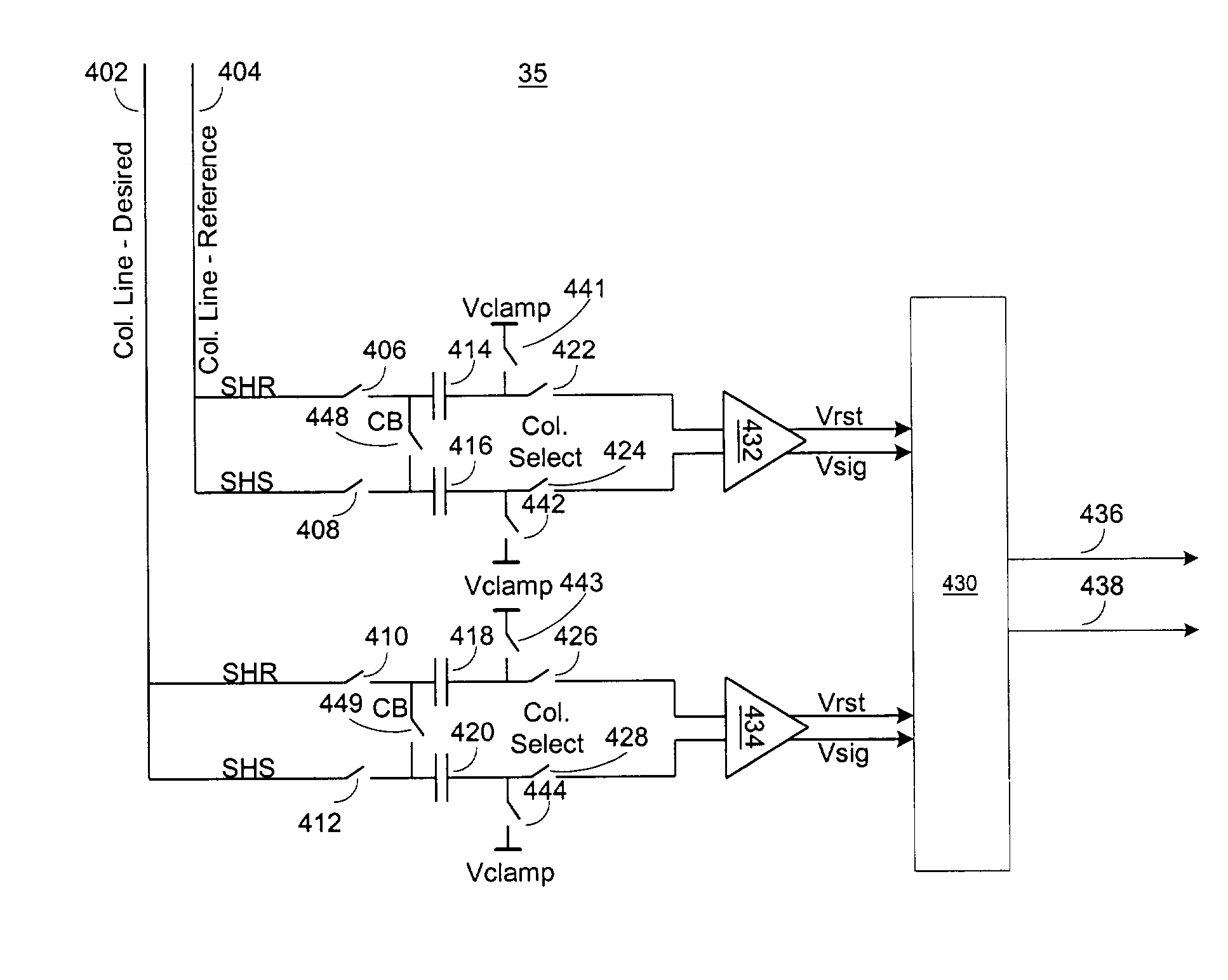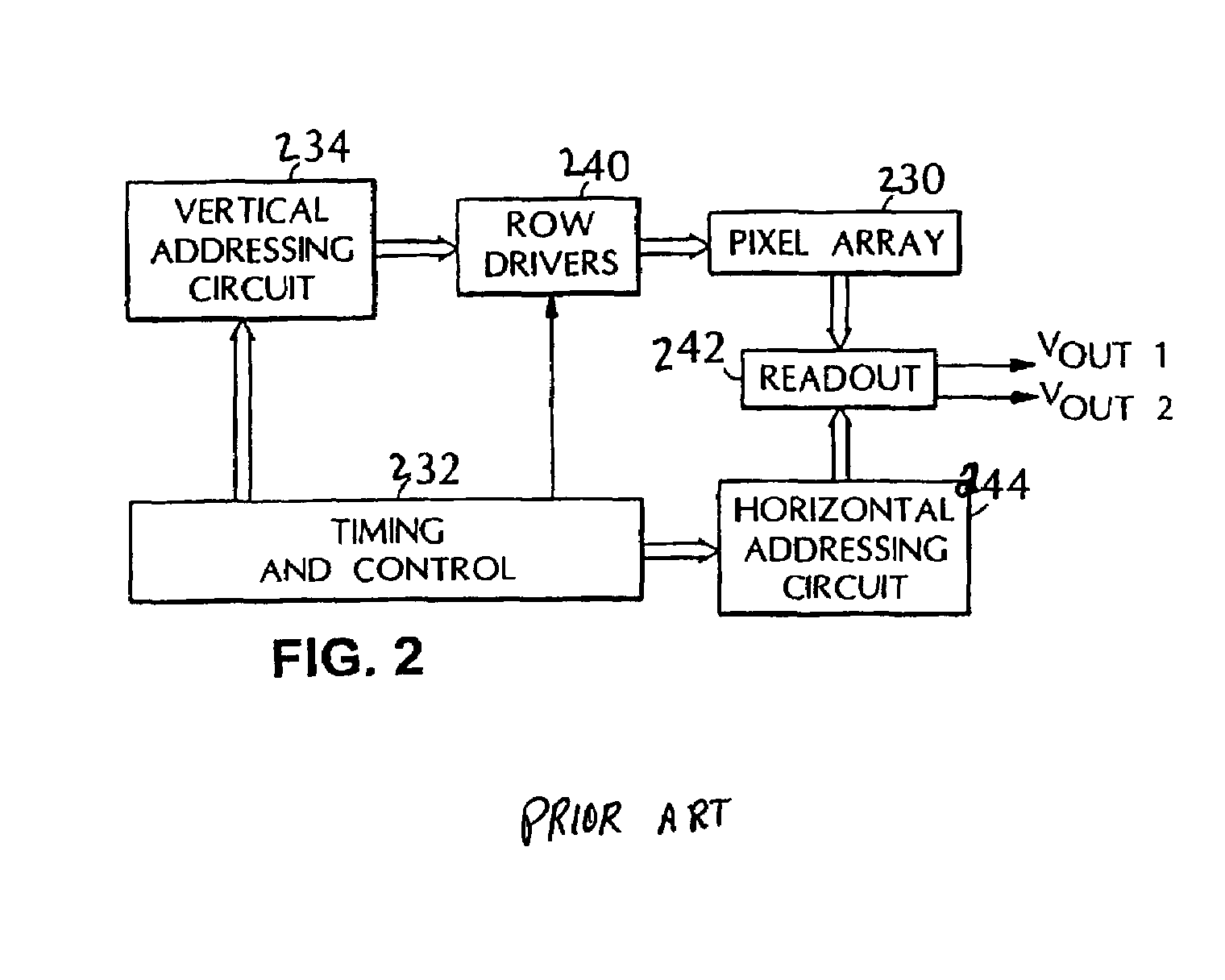Differential readout from pixels in CMOS sensor
a pixel and pixel technology, applied in the field of cmos imagers, can solve the problems of affecting the final output of pixel signals, compromising the signal to noise ratio of image sensor cores, and breaking the equipotentiality of substrates, so as to improve the consistency of pixel to pixel output, improve the readout, and minimize substrate and other common mode noise
- Summary
- Abstract
- Description
- Claims
- Application Information
AI Technical Summary
Benefits of technology
Problems solved by technology
Method used
Image
Examples
Embodiment Construction
[0028]In the following detailed description, reference is made to the accompanying drawings, which form a part hereof, and in which is shown by way of illustration specific embodiments in which the invention may be practiced. These embodiments are described in sufficient detail to enable those of ordinary skill in the art to make and use the invention, and it is to be understood that structural, logical or procedural changes may be made to the specific embodiments disclosed without departing from the spirit and scope of the present invention.
[0029]To minimize common ground noise and the loss of fill factor the present invention utilizes a neighbor pixel as the source of a reference differential signal which is combined with the output of a desired pixel. In an exemplary embodiment, the actual photosignal from the neighboring pixel is not read when the neighboring pixel acts as reference pixel, only a reference value is taken as a comparison signal from the reference pixel at the tim...
PUM
 Login to View More
Login to View More Abstract
Description
Claims
Application Information
 Login to View More
Login to View More - R&D
- Intellectual Property
- Life Sciences
- Materials
- Tech Scout
- Unparalleled Data Quality
- Higher Quality Content
- 60% Fewer Hallucinations
Browse by: Latest US Patents, China's latest patents, Technical Efficacy Thesaurus, Application Domain, Technology Topic, Popular Technical Reports.
© 2025 PatSnap. All rights reserved.Legal|Privacy policy|Modern Slavery Act Transparency Statement|Sitemap|About US| Contact US: help@patsnap.com



